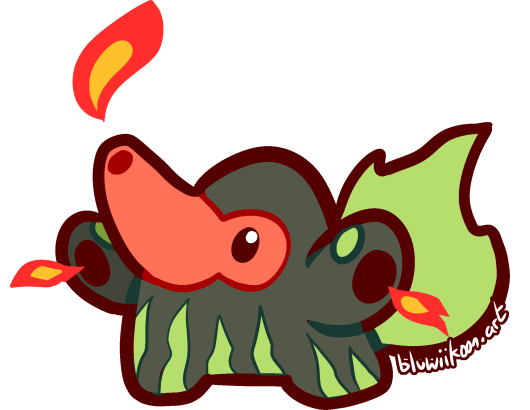Nosepass Variants: Fire-type
 Nosepass pygmypass.
Nosepass pygmypass.
The Fire-type variant of Nosepass was one of the first to be discovered, although many, many years after the standard Rock-type Nosepass had been established. A warmer climate is one of the reasons theorised as to why Nosepass would shed its rocky skin and instead take on a more furry, soft demeanor, as is typical of many Fire-type Pokémon on record. Additionally, these variants are far smaller on average than any other recorded variations thus far.
They are known to mix with nests of Heatmor, leading to initial confusion upon their discovery - indeed, our field researchers first thought they had found a Heatmor pre-evolution. Extensive observation and tests are required to determine whether Heatmor genes are present in this variation, or whether its close resemblance is an adaption for survival. Presumably, had this Nosepass variant not evolved to resemble Heatmor or to gain Fire-type attributes, local colonies of Durant may have wiped them out completely.
Their nose (or snout, in this instance) can expel hot gas and flames, in addition to consuming food (as per usual for Nosepass noses). The holes in their hands may also expel flames as a defensive mechanism. This variant of Nosepass has a natural mastery of the Fire Punch technique; standard Rock-type Nosepass typically need to be tutored to learn this move. Like standard Nosepass, it is typically gentle and is not likely to battle others unless provoked.
Whilst this variant is noted to be shy and reclusive, it is also exceptionally friendly once it realises a person or Pokémon means no harm to it. During testing, many of our scientists have been approached by these Nosepass solely for the purpose of physical interaction, in much the way a standard Meowth would. (Editor's Note: I held a Pygmypass and I cried. Highly recommended for hands-on study.)
Our impartial research team give Nosepass pygmypass a rating of 10/10. Whilst it may take a while to warm up (Editor's Note: Please.) to a new trainer, its good nature and predisposition towards affection makes it a worthy addition to any team or household.
Page originally published on 13th May 2020.
Page last updated on 11th April 2021 at 06:10 UTC - (navigational styling edits).

















